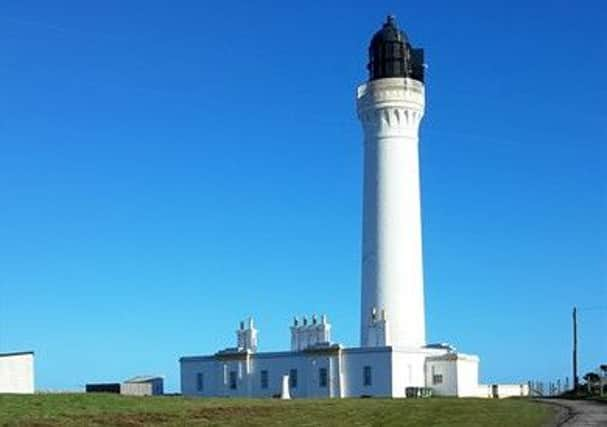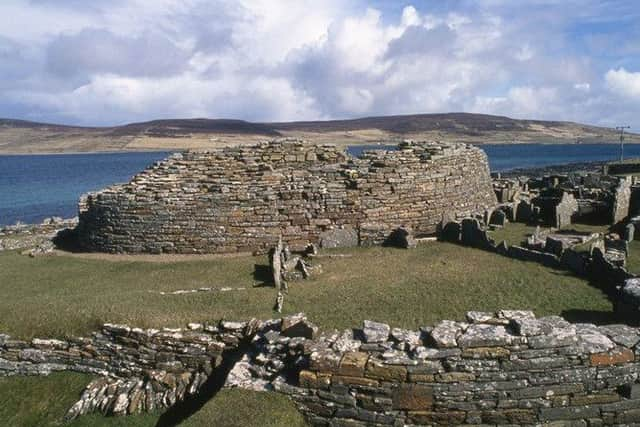5 hidden tourist gems on Orkney


Broch of Gurness
This is a circular Iron Age defensive building located in Evie and gives a great insight into life between 200 BC and 100 BC.
The Broch of Gurness is one of the most outstanding surviving examples of an Iron Age settlement that is unique to northern Scotland.
Advertisement
Hide AdAdvertisement
Hide Ad

The broch village at Gurness is one of the most impressive of its kind across Scotland. It has also been archaeologically excavated, providing a more vivid impression of life in the Scottish Iron Age than other comparable sites.
Gurness Broch was probably the residence of the principal family of the community. It also provided the last defensive resort.
The village at Gurness is the best-preserved of all broch villages. There are numerous houses. Each had an entrance leading to a large living-cum-sleeping room, off which lay smaller side rooms. The main room had a hearth, a large tank set into the floor, cupboards and sleeping spaces. Some houses had a yard outside, open to the sky, and a separate shed.


North Ronaldsay Lighthouse
The tallest land-based lighthouse in the UK, as well as the oldest intact lighthouse in Scotland.
Knap of Howar
The dwellings at the Knap of Howar are 5,000 year old houses. These are Europe’s oldest standing houses.
The Knap of Howar is a Neolithic site on the island of Papa Westray.
The name is Old Norse for `mound of mounds’ or `large barrow’. The building preserved at the site is considered the oldest stone house in northern Europe and is dated to 3700-3500 BCE.
Advertisement
Hide AdAdvertisement
Hide AdThe site consists of two structures, commonly referred to as `the farmstead’, built through dry stone construction with an adjoining passageway between them.
Based upon archaeological excavations, it is thought that these structures were built on top of a much older site and formed the centre of a farming establishment.
North Gauton Castle Seashack
This delicate sea-stack is hidden away on Orkney’s wild west coast and receives just a fraction of the visitors its famous cousins at Yesnaby and the Old Man of Hoy do.
There is a special charm to North Gaulton Castle though, which is a 170-foot high stack, and the fact that you’ll probably be alone to see it makes a trip there even more appealing!
Orkney Wireless Museum
The museum began in South Ronaldsay and was originally set-up to display some of the equipment used by servicemen and women in Orkney during WWII.
Orkney’s wartime history is strongly represented in a museum collection that spans the development of wireless in Orkney from the beginning of the 20th century to the present day.
Orkney Wireless Museum was founded in April 1983 by the late Jim MacDonald after a lifetime passion in working with and collecting all things electrical.
Advertisement
Hide AdAdvertisement
Hide AdIt is a fascinating collection showing how radio grew into a major industry and helped defend the Home Fleet at Scapa Flow.
HMS Tern
Part of Orkney’s air defences during the war but it was also used for training facilities for the Navy
During WW II there were four military airfields in Orkney. The Royal Navy’s base at Hatston was the first, commissioned as the HMS Sparrowhawk in October 1939.
The Home Fleet being in Scapa Flow soon attracted intense attacks by bombers as well as submarines.
The Navy began a second airfield at Skeabrae and the RAF began work at Grimsetter (now Orkney’s main civil airport). However, because of delays at Grimsetter, it was agreed that the RAF could take over Skeabrae, and the Navy would build a new airfield nearby at Twatt. This was commissioned as the HMS TERN in April 1941.
HMS Tern remained in service until 1957.
The Birsay Heritage Trust is to take the lead in preserving the remains and interpreting them to the public as a memorial to those who defended freedom.
